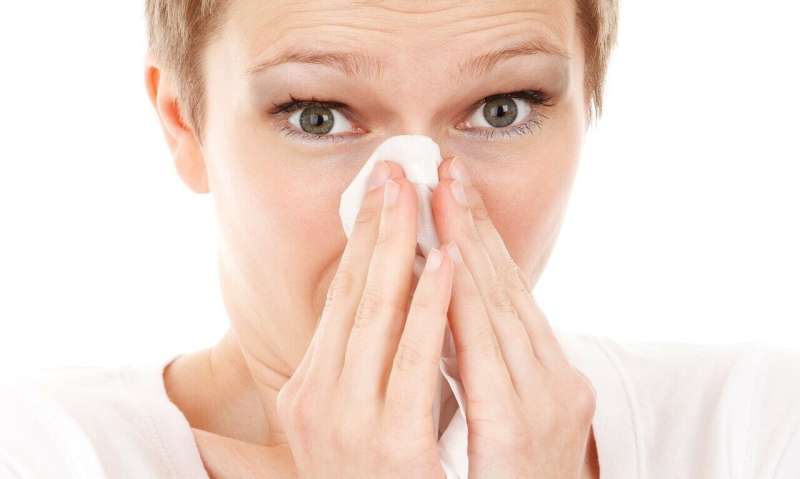
Pediatricians say that respiratory viruses that usually wait until fall are getting an early start this summer, a surprising trend that may have implications for the fall and winter.
Audrey Odom John, chief of the division of pediatric infectious diseases at Children’s Hospital of Philadelphia, said her colleagues started referring last month to the weird influx of kids with respiratory syncytial virus (RSV) and parainfluenza as “Christmas in July.”
Jonathan Miller, chief of primary care at Nemours duPont Hospital for Children in Delaware, said the viruses have been “really exploding,” with 127 positive RSV tests in July, the most since February 2020.
That has Miller thinking ahead to the other respiratory virus that usually infects thousands in the fall and winter. “We’ve had January-type RSV in July, so what does that mean for flu?” he asked.
He thinks it means that flu could also make an early entrance and quickly spread through children, who are good at spreading flu to adults. Miller is recommending that children get flu shots as early as possible this year. (CVS says it will have shots available by mid-August.)
John also worries that this could be an especially bad respiratory virus season as bugs find kids “who went almost two years without exposure” because of masks, social distancing and virtual learning. Now they’re spending more time together, and many families have relaxed their COVID-19 safety measures. Soon kids will return to school with varying degrees of mask usage. She also thinks children should get the shots as early as they can.
On the opposite end of the age spectrum, Ravina Kullar, a spokesperson for the Infectious Diseases Society of America (IDSA) and an infectious-disease consultant to about 90 nursing homes in Southern California, is worried about unseasonable RSV cases among her elderly patients. Normally, she wants patients to get flu shots by the end of October, but she’s already talking with nursing-home officials and patients about starting early this year. “I would recommend getting it now,” she said. “Never have I recommended a flu shot in August.” She does not want patients over 65 to be contending with flu and breakthrough COVID-19 cases at the same time.
Other experts said the picture is complicated by unknowable factors. Even in normal non-pandemic years, flu seasons are notoriously difficult to predict, said Christina Tan, epidemiologist for the New Jersey Department of Health. She always recommends that people get their shots, which can slow spread and reduce the seriousness of disease, in late August or September.
Formulas for flu vaccines are set months in advance, and doctors don’t find out how well they match circulating strains of virus until the season gets going. That match is what really determines how bad a flu season is, said Stephen Gluckman, an infectious diseases doctor at Penn Medicine.
Doctors are also worried that anti-vaccine sentiment directed at COVID-19 shots could suppress interest in flu shots. It may also be hard to promote two important vaccines at the same time. “I’m worried that the flu vaccine will get lost in the COVID hubbub,” said William Schaffner, an infectious diseases specialist at Vanderbilt University Medical Center.
New flu strains typically emerge in Asia and spread through the southern hemisphere, which has winter during our summer. Travelers then bring the new strains north, so tourism could be another factor. However, doctors pointed out, it won’t take many sick travelers for the virus to find a way in.
It is clear, though, that flu was largely stymied by last year’s COVID safety measures. Gluckman said his hospital usually sees up to a thousand positive flu tests during a season. “There literally was one case this year,” he said.
“We did not have a flu season,” Schaffner said. The line graph of cases “was virtually flat. It was the lowest that’s ever been recorded and in anyone’s memory.”
The lockdowns are over now and many people have stopped wearing masks or turning down social invitations. Political divisions have made mitigation efforts unpopular in many communities. Meanwhile, public health leaders increasingly are urging all of us, whether or not we’ve been vaccinated for COVID-19, to wear masks inside in public again. What we choose to do will affect how flu spreads. “The biggest variable that makes everything unclear is that we don’t actually know what the human behavior is going to be,” John said.
Doctors said timing your flu vaccine is always a little challenging. The effect of the shots wanes significantly over six months. This may be particularly true for older people. Doctors want patients to be protected during the full flu season, which can last into late spring.
If those over 65 get shots in August or early September, they may not have optimal protection in February and March, when flu is often quite prevalent, Schaffner said. He usually recommends that older people be vaccinated in late September or October.
Children who are receiving flu vaccine for the first time need two shots a month apart, he said. It makes sense to start them early.
Kullar and Gluckman wondered whether older adults who get shots early might need a second dose later in the year. “It’s probably prudent at least for higher risk adults to get immunized fairly early, then see what happens,” Gluckman said. He didn’t know whether insurance would cover a second shot.
Thomas Fekete, an infectious-diseases specialist at Temple University Hospital, said a second shot might not help because of “the way flu immunity works.” He said it might be better to give the anti-viral drug Tamiflu to prevent infection. Some transplant patients take it for weeks, he said.
Stacey Burling

